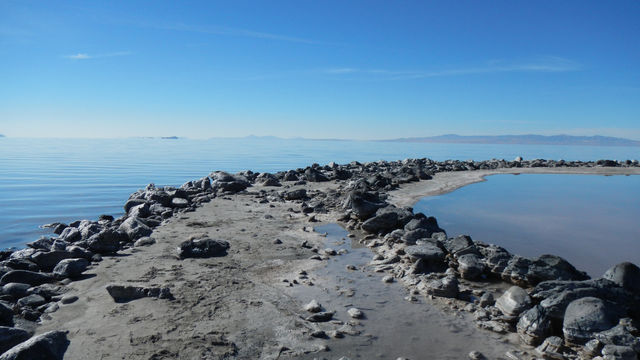The famous artist Andy Warhol once said, “Land really is the best art.”
Four artists got the opportunity to verify this quote in the Marriott Library’s Gould Auditorium on Thursday as a part of the ongoing ARTLandish lecture series, which delve into art that surrounds and involves the natural world. Each of these four individuals work their environments in their own unique ways.
Julie Rada, a postdoctoral fellow for the U’s Department of Theatre, was the first artist who spoke. Her stage is the desert of the American West because she thinks nature has form and content and that the uncontrollable non-constructible place is exciting.
Born in Oregon, her family moved to Arizona when she was young, which caused her to panic. The only thing she knew about the state came from depictions in cartoons that represented it as a dry desert. She eventually grew to love the landscape of her new home, however, and said that the smells of the desert are breathtaking, quoting from the Bible about her deep love of the environment there.
“I am from the desert, and I am of the desert,” she said.
Levi Jackson, a professor at Weber State University, was the second artist to speak. He is a photographer and videographer who similarly has a fascination with the desert. In his artwork, he said he hopes to demystify what people think about the environment of the west.
He said when people drive through the states, they see the fancy billboards of the landmarks but fail to notice the actual land behind the billboards. He said he uses this unnoticed landscape as a medium for his photography and videography.
Maria Sykes, a graduate architect at the U, spoke next. Sykes started up Epicenter, a nonprofit community design center, which runs programs and provides resources to the small community of Green River, Utah. Architects usually work in large cities, but Sykes decided to branch away from urban life and immerse herself in this rural community.
Sykes originally moved to Green River because of the local landscape, but decided to stay because of the people and their culture. Sykes said working directly with the community and using the resources in the environment is the best feeling.
The last to talk was Adam Bateman, a curator who has exhibited his work nationally and internationally. Bateman said that as a young man, he thought all art was landscape paintings. Later, he said he realized there was more meaning behind the paintings.
He said he is curious about our relationship with the environment and how it relates to the concept of manifest destiny, the 19th century belief that the expansion of the U.S. over North America was justified by God and inevitable.
Bateman said he likes working in Utah because you can actually make a difference in the art world.


